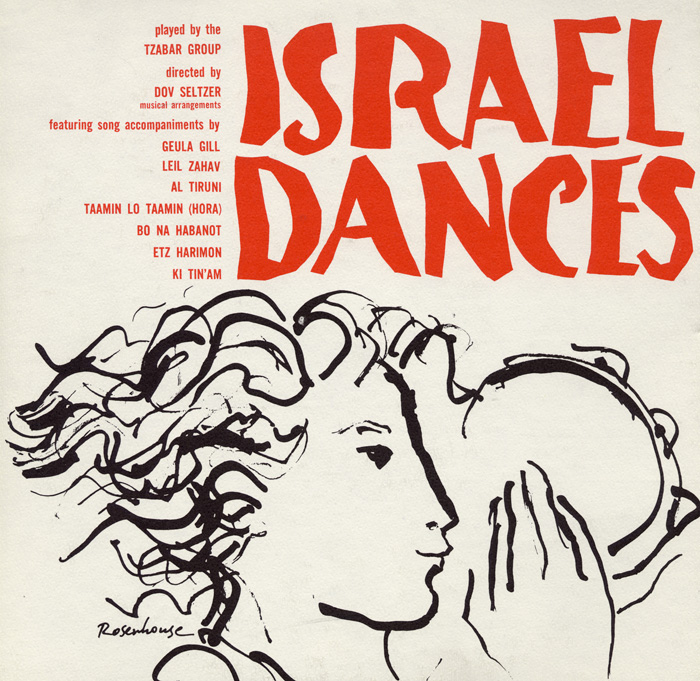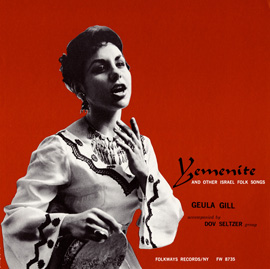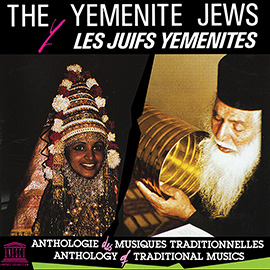Summary
Students will be introduced to Jewish folk music through singing, playing, and dancing a traditional arrangement of “Al Tiruni” and participating in guided discussions of Jewish history and cultural heritage.
Suggested Grade Levels: 6-8, 9-12
Country: Israel
Region: Middle East
Culture Group: Jewish
Genre: Jewish
Instruments: Voice, Piano, Guitar, Trumpet, Flute, Violin, Tambourine, Xylophone, Glockenspiel, Recorder, Hand Drum, Marimba
Language: Hebrew
Co-Curricular Areas: Social Studies, Dance
National Standards: 1, 2, 4, 5, 6, 8, 9
Prerequisites: None
Objectives:
- Understanding a brief history of Jewish people and Israel
- Understanding music as a part of daily life
- Simple understanding of modes used in Jewish music
- Arranging a piece of music in a unique way
Material:
- Song “Al Tiruni” from Israel Dances
- Liner Notes: “Israel Dances”
- Friedland, L. E. ‘Tantsn Is Lebn’: Dancing in eastern European Jewish Culture.Dance Research Journal (Vol. 17, No. 2, pp. 76-80).
- Kwalwasse, J. (1925). Jewish Folk-Songs. The Musical Quarterly.Oxford Press. (p. 55-62).
- Sellers, O. R. (1941).Musical instruments of Israel.The biblical archaeologist (Vol. 4, No. 3).
- Roginsky, D. (2007) Folklore, folklorism, and synchronization: preserved-created folklore in Israel.Journal of folklore research (Vol. 44, No. 1, p. 41-66). Bloomington: Indiana University Press.
Further Reading and Listening:
- Album “Jewish Life: The Old Country”
- Album “Memories of Poland”
- Album “Cantorials”
- Album “Hebrew Folk Songs”
- Kartomi, M. &McCredie, A.D. Musical outcomes of Jewish migration into Asia via the northern and southern routes c. 1780-c. 1950. Ethnomusicology forum (Vol. 13, No. 1).
- Shiloah, A. & Cohen, E. (1983) The dynamics of change in Jewish Oriental ethnic music in Israel. Ethnomusicology (Vol. 27, No. 2, p. 227-252).
Lesson Segments:
- An Introduction to Jewish Folk Music (National Standards 6, 9)
- Performing “Al Tiruni” (National Standards 1, 2, 4, 5, 6, 9)
- An Introduction to Jewish Dance (National Standards 1, 2, 5, 6, 8, 9)
Lesson Segment 1: An Introduction to Jewish Folk Music

“Al Tiruni”
from Israel Dances (1957) | FW06935
Procedure:
- Play “Al Tiruni”.
- Where do you think this piece is from? Who would play this type of music?
- What sorts of instruments do you hear?
- How might people play these instruments?
- Listen again, and ask additional questions:
- Who has the melody of the song? Does it occur on different instruments/voices?
- Are there any unique or unusual parts you can identify coming from the instruments?
- Review of Jewish history and musical culture.
- Migration and identity: read excerpts from “Brief History of Israel...”
- View map of world and pinpoint Israel
- Show the paths of Jewish migration all across the world
- Folk music: read excerpt from “Jewish Folk-Songs”
- Discuss how music is an extension of life for many cultures, and how our relationship with music may vary from place to place
- Discuss how most Jewish folk-songs are in the minor mode and simple, and reasons why
- Ask students when ‘Al Tiruni’ might be sung or played, and why
- Watch videos on other Jewish music, ie. Klezmer (Recommended: Itzhak Perlman, or “MeinShteteleBelz”)
Assessment:
- Are students able to discuss the material in an age appropriate manner? Are students able to identify the cultural origin of this piece as well as what instruments are playing?
Lesson Segment 2. Performing “Al Tiruni”
Procedure:
- Perform arrangement (included) on instruments.
- Discuss traditional Israeli/Jewish instruments (from “Musical Instruments of Israel”), and draw a clear distinction between the authentic instruments and the instruments students will be using.
- Explain that it is acceptable to play this piece on different instruments for educational purposes, but traditionally they would be played on authentic instruments
- Teach vocal melody to all students by rote.
- a. Read aloud lyrics and translation and discuss their meaning
- Discuss specific stylistic concepts vital to the aesthetic of the music, and encourage replication in their own performance.
- Optional opportunity for arranging.
- Students can determine the order of who will play the melody
- b. Students can vary their written accompaniment parts, if they have mastered the original
Assessment:
- Are students able to perform the arrangement? Are students able to discuss the material in an age appropriate manner? Are students able to learn and sing the vocal line by rote?
Lesson Segment 3. An Introduction to Jewish Dance
Procedure:
- History and significance of Jewish dance: read excerpt “Folklore...” and “Tantsn Is Lebn": Dancing in Eastern European Jewish Culture”.
- Discuss similarities and differences between this culture, and the culture students are most familiar with.
- Learn traditional dance for ‘Al Tiruni’.
- Instructions found in Liner Notes: “Israel Dances”
- Play “Al Tiruni”
- Using these dance moves (or inventing original, style appropriate moves), have students create their own dance.
- Have students identify the form of the song, and emphasis addressing the form with their dance
- Perform the piece/dance.
- Split the class up into musicians and dancers
- Musicians perform, while dancers sing and dance the original dance or one of their creating
- c. Demonstrate common motions and gestures in Jewish dance (information from "Tantsn Is Lebn": Dancing...” and in CD liner notes)
Assessment:
- Are students able to discuss material in an age appropriate manner? Are students able to perform the piece and dance?
Extension:
- Consider bringing in culture bearers from the community, or visiting local performance of Jewish folk-music or Klezmer
- Opportunities for in-depth discussion about Israeli-Palestinian conflict, WWII, Jewish oppression, the Holocaust
- Use of folk-melody from “Al Tiruni” as basic proficiency test on a variety of wind instruments
- Explore further the relationship with dance and music, and compare across multiple cultures
Folklore, Folklorism, and Synchronization: Preserved-Created Folklore in Israel
“The invention of Israeli folk dances and their distribution to the public were part of a social movement, a national project to create a new physical and cultural Israeli identity...Contrary to commonly held notions regarding folk-lore, and folkdance in particular, as having deep historical roots, the dances that are danced in Israel and throughout the world as "Israeli folkdances" are relatively new, no more than sixty years old. These new dances, however are based on a cluster of components that were borrowed from older Jewish and non-Jewish ethnic, religious, and folkdances.”
“The popular character of Israeli folk dancing today reflects the many changes in Israeli culture and society. For the older generation, to be an Israeli meant kibbutz life, socialism, agriculture, and volunteerism, all themes that found their way into Israeli folk dances. For the younger generation, values of globalization, Americanization, commercialized culture, and striving for material success find their way into new Israeli folkdances.” (Roginsky, 2007)
Brief History of Israel and the Jewish People
“After the exile by the Romans at 70 CE, the Jewish people migrated to Europe and North Africa. In the Diaspora (scattered outside of the Land of Israel), they established rich cultural and economic lives, and contributed greatly to the societies where they lived. Yet, they continued their national culture and prayed to return to Israel through centuries. In the first half of the 20th century there were major waves of immigration of Jews back to Israel from Arab countries and from Europe. During the British rule in Palestine, the Jewish people were subject to great violence and massacres directed by Arab civilians or forces of the neighboring Arab states. During World War II, the Nazi regime in Germany decimated about 6 million Jews creating the great tragedy of The Holocaust.”
“In 1948, Jewish Community in Israel under the leadership of David Ben-Gurion reestablished sovereignty over their ancient homeland. The Declaration of Independence of the modern State of Israel was announced on the day that the last British forces left Israel (May 14, 1948).” (Online)
Jewish Folk-Songs
“Practically all folk-music of the Jew is modal or in the minor mode. This peculiarity cannot be attributed entirely to the antiquity of the modes, but rather to the psychology of the people. Centuries of political dependence upon other nations, with almost ceaseless persecutions, have turned the attention of the Jews from external things to a study of the inner man. This change of attention has resulted in a soberness, seriousness and sadness, that is characteristic of the race.”
“There is no doubt that these folk-songs reveal the Jewish racial experience. They show the same vividness and intensity which characterize the Jew's religion. They move along with anxious tread, manifesting the super sensitiveness of the Jew neurologically. The firm, steady, and unswerving tread of the Anglo-Saxon folk-song is absent in the Jewish folk-song. We can feel the more sensitive and nervous make-up of the Jew from the tonal movement of his songs. We can understand the extent of his suffering from these unconscious revelations. No, the Jew is not stodgy or stolid, and his attempts at self-expression through music reveal him as he is.” (Kwalwasse, 1925)
"Tantsn Is Lebn": Dancing in Eastern European Jewish Culture
“Hallmarks of that style include: posture with slight arching of the torso; the upper torso (primarily the shoulder area) rotated to face the front diagonal; the head sometimes tilted slightly back and/or rotated to one side, often to contrast with the shoulder area rotation; arms and hands raised above shoulder level; gestures with the hands involving much flexicon or rotation of the wrist; wimple weight shift and stepping variations, sometimes including kicks, jumps, or leaps, or with one’s center of gravity at low and middle levels.” (Friedland, 1986)
Lyrics and translation for “Al Tiruni”:
“Al tir'unishe'anishcharchoret
sheshzafatnihashamesh.
Shechoraanivena'ava
Shechoraani.
Vena'avabenotYerushalayim.”
“Don't stare at me because I am dark,
because the sun has graced me.
I am dark and beautiful,
I am dark, and beautiful,
O daughters of Jerusalem.”






